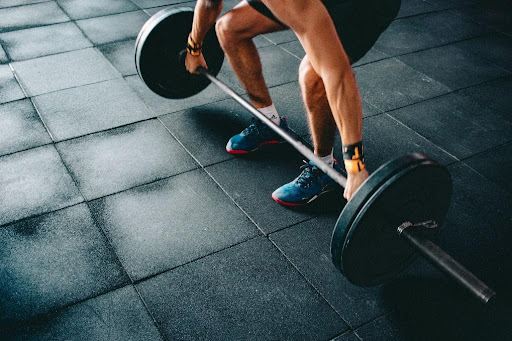Strength for Long Distance Running
Building up strength is an often neglected part of the training of a middle and long distance runner.
Consider the fact that in international races the last laps of a long distance race are often run in around 55 seconds for the men and 60 seconds for women. These runners need to be fast, and for that you need to be strong.
Through regular strength training you should aim to build strength, both in your limbs and also your trunk, which will allow for the maintenance of speed when you are tired and also the power for running at the high pace often involved in races. Also, being stronger consequently improves your running efficiency, making it easier for your body to run faster for longer. Additionally, strength work can help prevent injuries by making your body more resilient. Especially if you target your own strength training at areas that cause you problems for example your calves.

Photo Muddy run
In the past, endurance runners have often been doubtful of strength training, fearing that they will put on too much muscle mass which will slow them down. However, unless you lift frequently and substantially increase your calorie intake, this is highly unlikely. Instead, you will strengthen the muscles you already have and improve neuromuscular coordination between the brain and muscles to facilitate faster running.
A large part of the strength required can be attained from circuit training, particularly if you are a not particularly strong distance runner. A range of press ups, abdominal curls, tricep dips, lunges, step-ups, back arches etc. will provide a good base of strength and strength endurance. Building good core stability is very important as it helps you keep your posture correct and your stride length long when you get tired.
Many long distance runners now also undertake a weights program. This can involve mixing up the types of weights sessions performed to develop different aspects of strength, for example strength endurance, power or muscle contraction speed.
To work on strength endurance, the number of reps will be high and the recoveries shorter, such as sessions with 5 sets of 12-15 reps and 1-2 minute recoveries. To increase strength and develop power, much heavier weights should be lifted with fewer reps and longer recoveries, e.g. 5 sets of 4-6 reps with 3-5 minute rests.

Photo Woman lifting weights
However, if the gym is not your favourite place and you are limited for time it is more sensible to strengthen your weaker areas that could, over time, lead to injuries.
Typically this is performing exercises to strengthen your gluteal muscles, hamstrings and calves. This can be achieved through weighted squats, lunges, deadlifts and calf raises. Furthermore a focus on single leg strengthening exercises such as pistol squats, split squats and single leg deadlifts are ideal as huge amounts of force go through each leg every time it hits the ground during the running stride. See our weights training section for more details. Weight Training

Photo Man lifting weights
Finally, incorporating a range of plyometric work will help produce the power needed for long distance running. This can be performed as part of your gym session or prior to a session when your legs are still fresh to get the maximum training benefits.
